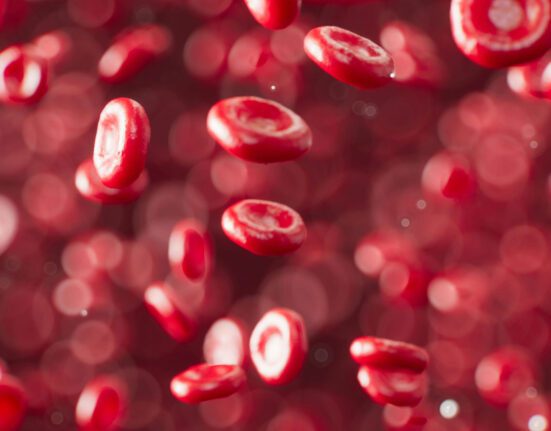Dysautonomia. What is it?

What it is 1
Heart rate, respiration, blood pressure regulation, digestion, sleep cycles, temperature regulation, perspiration, and many more involuntary or unconcious bodily processes are all under the direction of the autonomic nervous system. Dysautonomia means “dysfunction” of the “autonomic nervous system (ANS)”. It is also known as “autonomic dysfunction” or “autonomic neuropathy”2.
Dysautonomia is an umbrella term for a group of neurological conditions. You can have more than one type of dysautonomia. Examples include Postural orthostatic tachycardia syndrome (POTS), neurocardiogenic (vasovagal) syncope, inappropriate sinus tachycardia, orthostatic hypotension, pure autonomic failure, multiple system atrophy, and autoimmune autonomic ganglionopathy.
There are three basic forms of dysautonomia: primary, secondary and idiopathic.
Primary: These are rare inherited or degenerative neurological diseases.
Secondary: Dysautonomia occurs due to another condition.
Idiopathic: This means that the medical profession does not know what is causing the dysautonomia.
Who Gets It?
Dysautonomia affects about 70 million people globally1,2.
Primary Type – Examples are Familial Dysautonomia, Pure Autonomic Failure
Secondary Type2 –Dysautonomia is caused by injury to the autonomic nervous system from an acquired disorder. Some examples are as follows:
COVID-19, Long COVID, brain tumours, Medication, Spinal cord injury, Lupus, Multiple Sclerosis, HIV & AIDS, Alcohol Use Disorder, Coeliac Disease, Parkinson’s Disease, Diabetes Mellitus, Vitamin B12 Deficiency.
Typical Symptoms
These are symptoms of a malfunctioning autonomic nervous system, which are multiple and would depend on the type of dysautonomia you have. The most common symptoms are as follows, too fast a heartbeat (tachycardia) or slow heartbeat (bradycardia), chest pains, dizziness, fainting, nausea, a gastrointestinal tract that moves too quickly(diarrhoea) or too slowly (constipation), shakiness, excessive or insufficient perspiration, cognitive impairment (sometimes called “brain fog“), headaches, fatigue.
Kids with Dysautonomia
Children with Secondary Dysautonomia – common symptoms are as follows:
Tachycardia, dizzy, fatigue, anxiety, nausea or vomiting, headache, fainting, constipation, intolerance to heat or cold, frequent urination or urinary incontinence.
Children with Primary Dysautonomia: there are a number of types that present from birth:
Familial dysautonomia3,4is very rare and present from birth it is an inherited form of dysautonomia caused by a mutation in a gene called ELP1. It mainly affects Ashkenazi Jews3. It shows itself with feeding difficulties, floppiness, low body temperature, low ability to form tears when crying, reduced sensitivity to pain and temperature.
Others are: Hereditary Sensory & Autonomic Neuropathy (HSAN), Congenital Central Hypoventilation Syndrome (CCHS), Catecholaminergic Polymorphic Tachycardia (CPVT) – a good write up of the symptoms of these can be found at the Dysautonomia Project website.
DIAGNOSIS: In children the primary dysautonomias present early in newborns or infants and are diagnosed by paediatricians and specialist paediatricians.
Secondary dysautonomia in teens and adults is extremely difficult to diagnose; to this day, most doctors are not trained to diagnose or manage autonomic nervous system illnesses, so for most patients, a diagnosis can take years, with sufferers seeing multiple specialists before a physician recognizes their dysautonomia!
Dysautonomias most often impact the neurological (nerves), pulmonary (lungs), cardiovascular (heart), gastrointestinal (gut), secretomotor (sweat glands), and pupillomotor (pupils) organ systems. Autonomic disorders involve various organ systems; hence the presentation of symptoms varies greatly between individuals; for example, the presentation of dysautonomia in one patient can differ from another: one patient with POTs might have a main symptom of nausea, and another with POTS might complain of fainting as their main issue; this makes diagnosis challenging5.
Method of diagnosis – a detailed medical history is the key, in addition to a physical examination and blood pressure from sitting/lying to standing. Additional tests would include specific autonomic functioning tests, cardiac tests, blood work. The Dysautonomia Support Network gives a useful guide of the types of tests needed to diagnose dysautonomia on their website.
KEY POINTS:
- Dysautonomia is a dysfunction of the autonomic nervous system.
- There are three forms of dysautonomia primary, secondary and idiopathic5.
- Primary dysautonomia is rare.
- Secondary dysautonomia is more common and occurs due to injury to the ANS from an acquired condition.
- Diagnosis of secondary dysautonomia is challenging because most doctors are not trained to recognize or manage autonomic nervous system disorders.
- Different organ systems are involved with autonomic disorders, so people can present in very different ways and suffer from more than one dysautonomia.
Relief:
There is no cure for dysautonomia, and symptoms can range from mild to extreme, but it is a syndrome that can be managed. Affected individuals will have good and bad days. Any treatments focus on managing symptoms, which vary depending on the type of dysautonomia you have5. For example, constipation could be addressed with laxatives and a fibre-rich diet. Staying hydrated will assist to keep your blood pressure stable. Maintaining a normal blood glucose level will keep your diabetes under control. Immunosuppressive drugs can be used to treat autoimmune diseases2. After diagnosis, any treatment should be done under the care of a registered and qualified healthcare practitioner who knows how to manage the type or types of dysautonomia you have.
Alternative Therapies5:
There isn’t much of an evidence-base for these, but some sufferers have reported relief from their dysautonomia by practicing them:
- Acupuncture
- Cranial Sacral Massage Therapy
- Chiropractic Manipulation
- Yoga
- Massage Therapy
- Reflexology
- Deep breathing Exercises
- Alternative diets: You might try an organic, whole-foods approach that limits sugar, some carbs, and artificial/processed foods. Gluten and dairy-free diets may benefit some people.
Handy Advice for Managing Dysautonomia5
Drinking alcohol and energy drinks should be done so carefully or avoided. Both can have an impact on the heart and nervous system and are dehydrating by nature. Carbonated drinks should be consumed in moderation or not at all as the body has to work to remove the excess carbon dioxide intake.
- Smaller meals will help with digestion.
- Steer clear of extended sitting or standing. Sit, lay, or raise your feet if you feel lightheaded.
- Avoid heat, including hot showers.
- Sleep plenty. Develop a nightly schedule and make an effort to follow it. Teens with POTS need to know this especially.
- Learn to manage stress.
- When you need assistance, ask for it.
- Monitor your mental health and get assistance if needed.
Credible Information:








